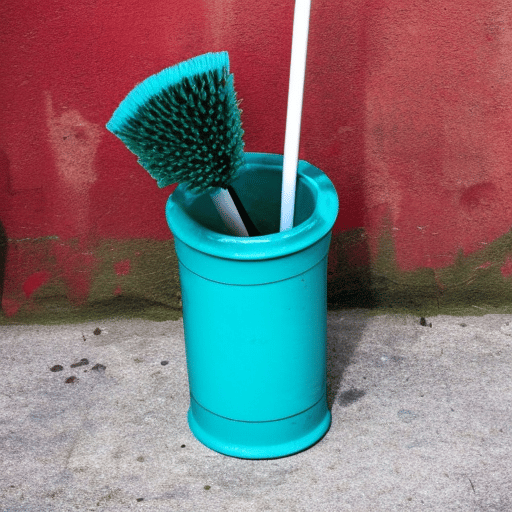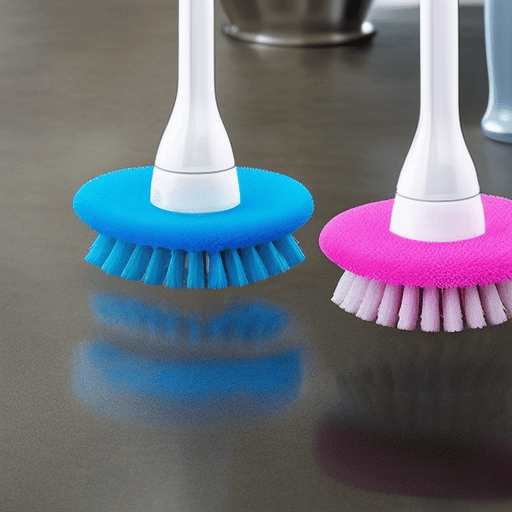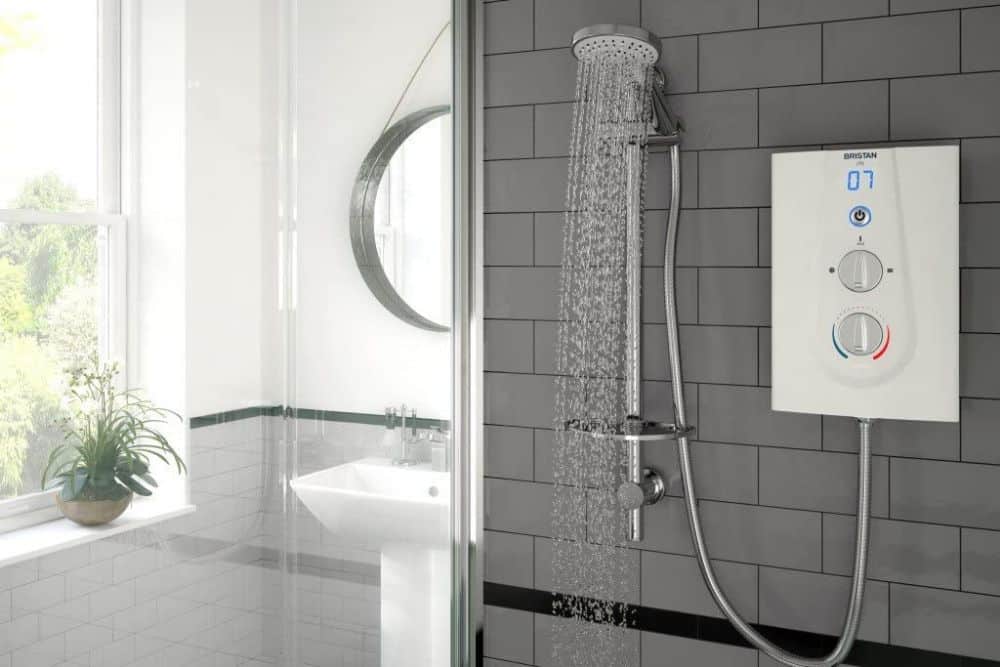Last Updated on
We all know the importance of keeping a clean bathroom, but when it comes to cleaning supplies we often forget one key item: our toilet brush. It’s easy to overlook how often should you change a toilet brush and just assume that they last forever. However, this isn’t necessarily true – so let’s dive into what kind of care your trusty loo-cleaning companion needs in order to stay in tip top shape. How often should you change a toilet brush? What are some tips for cleaning and replacing it? And if traditional brushes aren’t your style, don’t worry – there are plenty of alternatives out there too.
Table of Contents:
- The Basics of Toilet Brush Care
- What Are Some Alternatives to Traditional Toilet Brushes?
- FAQs in Relation to How Often Should You Change a Toilet Brush
- Conclusion
The Basics of Toilet Brush Care
Toilet brushes are essential tools for keeping your bathroom clean and hygienic. But like any cleaning tool, they need to be cared for properly in order to work effectively. Here’s a quick guide on how to look after your toilet brush so it can do its job well.
Tips for Cleaning and Storing Your Toilet Brush
First of all, it’s important to keep the bristles of the brush clean at all times. After each use, rinse off the bristles with hot water and a mild detergent or disinfectant solution. This will help remove any bacteria that may have been transferred from the toilet bowl onto the brush during cleaning.
Moreover, make sure you take extra care not to spread germs around other surfaces in your bathroom such as sinks or taps – always wash hands thoroughly afterwards too. It’s also worth investing in a quality product made from durable materials such as stainless steel; this will ensure that you get maximum value out of each purchase without having to replace them too often due to their poor build quality.
It’s also important to store your toilet brush correctly when not in use – this means away from direct sunlight and moisture as these can cause damage over time. A good option is a dedicated holder which allows air circulation around the bristles while keeping them dry between uses.
Properly caring for your toilet brush is essential to keeping your bathroom clean and hygienic. Now, let’s look at how often you should replace it.
How Often Should You Change a Toilet Brush?
When it comes to toilet brush care, one of the most important questions is how often you should change a toilet brush. The answer depends on several factors.
First, consider the type of material your toilet brush is made from. Natural bristles are more absorbent than synthetic materials and can become discoloured over time. As such, they may need to be replaced more frequently than other types of brushes.

Second, think about how often you use your toilet brush. If you clean your bathroom regularly with a disinfectant cleaner or bleach solution, then you may not need to replace your brush as often as someone who only uses it occasionally. However, if the bristles start to look worn or frayed, then it’s probably time for a new one regardless of usage frequency.
Thirdly, consider the environment in which you keep your toilet brush stored when not in use. If it is kept in an area that is damp or humid (such as near a shower), this could lead to mould growth on the bristles and necessitate replacement sooner rather than later. On the other hand, if stored in a dry location away from moisture sources such as sinks and showers then its lifespan will likely be extended significantly compared with wetter conditions where bacteria can thrive much easier and faster leading to quicker degradation of bristles over time due to wear-and-tear caused by cleaning activities plus bacterial/fungal infestation damage too.
Finally – what kind of cleaner do you use? Some cleaners contain harsh chemicals that can degrade plastic handles or corrode metal parts making them brittle and prone to breaking off easily; these should be avoided unless necessary since they will reduce both handle longevity & overall life expectancy for any given model drastically.
In conclusion, depending on all the factors mentioned above, it might be advisable to replace your toilet brush every three months. However, each individual situation will vary so make sure that regular inspections are carried out periodically throughout its lifetime in order to spot any potential issues early before they become major problems requiring costly repairs or replacements.
To ensure you’re doing it correctly, read on for tips on cleaning and replacing your toilet brush.
What Are Some Alternatives to Traditional Toilet Brushes?
When it comes to cleaning the toilet, a traditional brush is often the go-to tool. But there are other options out there that may be more effective and easier to use.
Disposable Cleaning Pads:
Disposable cleaning pads are an excellent alternative to traditional brushes. These pads come in a variety of shapes and sizes, making them perfect for getting into hard-to-reach areas like under the rim or around corners. They’re also great for quick cleanups as they can easily be thrown away after each use. The downside is that they can be expensive if you need to buy them regularly.
Automatic Scrubbing Machines:
Automatic scrubbing machines are another option when it comes to toilet cleaning tools. These machines do all the work for you – just fill them with water, add your preferred cleaner, press start and let it do its thing. While these machines can save time and effort, they tend to be quite pricey, making them suitable for everyone’s budget.
Reusable Toilet Brushes:

Reusable toilet brushes offer a cost-effective solution compared to disposable pads or automatic scrubbers but still provide good results when used correctly. They come in various shapes and sizes which makes them ideal for reaching those tricky spots under the rim or around corners where dirt tends to accumulate over time. Just make sure you replace your brush every few months as bacteria builds up quickly on bristles that aren’t cleaned properly between uses.
If you’re looking for something even more eco-friendly than reusable brushes then natural alternatives such as baking soda paste or vinegar spray could help keep your bathroom sparkling without harsh chemicals or plastic waste from disposables. Baking soda paste works well at removing stubborn stains, while vinegar spray is great at killing germs without leaving any residue behind, both of which make natural alternatives worth considering if you want an environmentally friendly way of keeping your loo clean.
FAQs in Relation to How Often Should You Change a Toilet Brush
How long are you supposed to keep a toilet brush?
It is recommended to replace your toilet brush every 3-4 months. This helps ensure that the bristles remain effective and free of bacteria. To keep your brush in top condition, make sure you rinse it with hot water after each use and store it in a dry place away from direct sunlight. Additionally, disinfecting the brush once a month will help maintain hygiene standards and extend its life span. Taking these simple steps can help you get the most out of your toilet brush.
Should I change the toilet brush?
Yes, you should change your toilet brush. Toilet brushes are used to clean the bowl and can become a breeding ground for bacteria if not replaced regularly. It is recommended that you replace your toilet brush every 3-4 months or sooner if it starts to look worn out or discoloured. Additionally, using an old brush may cause scratches on the surface of the bowl which can be difficult to remove. Therefore, replacing your toilet brush regularly will help keep your bathroom clean and hygienic.
Do you clean the toilet brush after each use?
Yes, it is important to clean your toilet brush after each use. This helps prevent the spread of germs and bacteria that can cause illness or infection. To properly clean a toilet brush, rinse it in hot water with a mild disinfectant or bleach solution. Allow the bristles to soak for several minutes before rinsing off thoroughly with hot water. Finally, dry the bristles completely before storing the brush away in an upright position so that any remaining moisture does not collect at the base of the handle.
Conclusion
Depending on your bathroom habits and preferences, you may need to replace your toilet brush more or less frequently than others. However, if you follow the tips on how often should you change a toilet brush, then you can ensure that your bathroom stays clean and hygienic without having to worry about changing out the bristles too often. And if traditional brushes aren’t quite up your alley, there are plenty of alternatives available that make keeping a clean loo even easier.
Paul is the type of person who never met a problem he couldn’t fix. He can always be found tinkering with something in his house, even if it isn’t broken! His tips and tricks are often shared on our site. He’s the one you call when something breaks because he has been known to improvise fixes for everything from leaky faucets to malfunctioning dryers.



